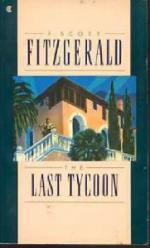|
This section contains 2,550 words (approx. 9 pages at 300 words per page) |

|
Often well educated in white schools and comfortable in white society, the first generation of Indian leaders to emerge on the national level included persons like Charles Eastman and Gertrude Bonnin. Yet despite their acceptance of assimilationist ideals, they also contributed a new ideal of their own: a Pan-Indian identity that emphasized the commonness of Indians of all tribes. They recognized things that Indians held in common, much more than previous tribal leaders had done. While they valued a "civilized" lifestyle, they also respected their native traditions enough to recognize the injustices of the federal colonial domination.
Although regarded as a flawed fragment, a falling off from F. Scott Fitzgerald's earlier fictional achievements, The Last Tycoon, edited by Edmund Wilson and published posthumously along with the author's notes and plans in 1941, a year after Fitzgerald's death, is a work of conscientious craftsmanship. Rarely lavished with the same stupendous...
|
This section contains 2,550 words (approx. 9 pages at 300 words per page) |

|


